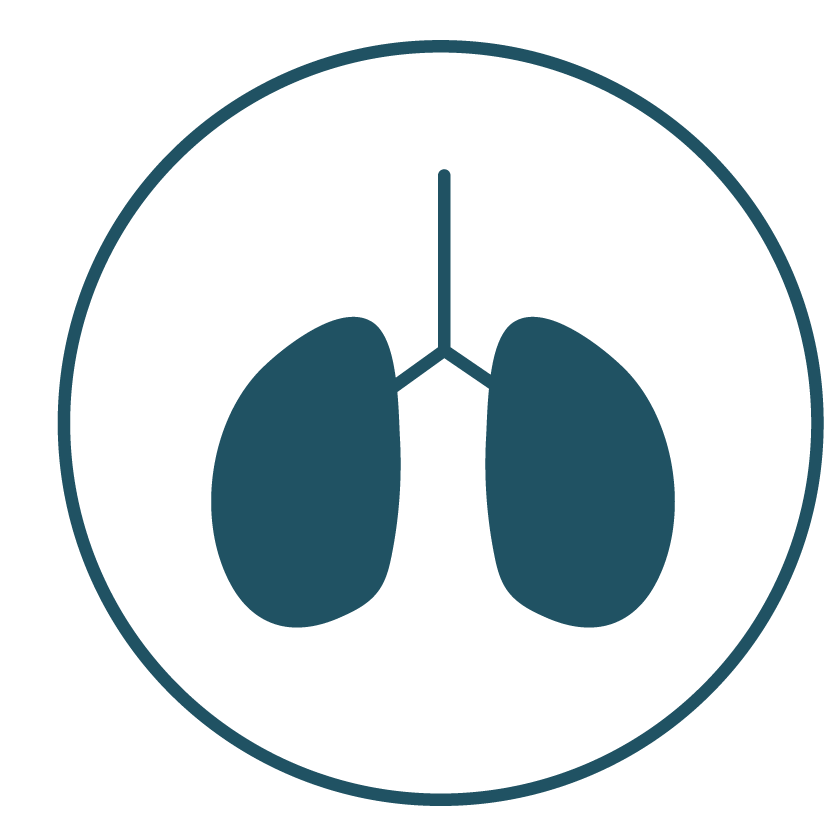Occupational Lung Disease
Occupational lung disease is among the common, yet severe and preventable work-related injuries afflicting the American workforce. Long-term exposure may be fatal.

What Are Occupational Lung Diseases?
Occupational lung disease is a type of illness associated with toxic exposure to irritants in the workplace. Though the Occupational Safety and Health Administration (OSHA) provides federal guidelines for job safety practices, rates of lung illness continue to increase in the U.S.
Each year, new sources of respiratory damage are created, leading to higher rates of work-related lung disease. A majority of employees exposed regularly to toxins on the job exhibit only mild symptoms of lung complications during the early years of employment. The link between occupational exposure and lung cancer and other diseases is often not realized for decades due to the lengthy latency periods of many lung disorders.
Long-term exposure to organic and inorganic compounds as well as carcinogens can overwhelm and damage healthy tissues. When lung damage leads to death in these situations, the National Occupational Mortality Surveillance (NOMS) program tracks them and assesses risk to industry workers. The National Institute for Occupational Safety and Health (NIOSH) uses this data to list current occupational causes of death by industry, evaluate new causes based on patterns, and detail possible prevention methods.
Typically, it takes consistently measurable levels of toxic exposure over long periods of time to cause the type of long-term damage requiring treatment like surgery or chemotherapy. However, a single, severe incident of occupational exposure can lead to short- and long-term respiratory impairment. The early symptoms of most occupational lung diseases, nonetheless, are similar, including:
- Chest pain
- Coughing
- Irregular breathing
- Shortness of breath
Jobs at Risk
There are multiple jobs at higher risk for dangerous levels of exposure than others. Occupations at risk for developing illness include:
- Automotive
- Aviation / Airforce
- Chemical
- Construction, demolition, renovation crews
- Firefighters
- First responders and other service-members
- Insulation installers
- Iron and Steel
- Maritime / Navy
- Miners and Millers
- Plumbers/ Pipefitters
- Power plant and utility workers
- Railroad workers
- Textile workers
If you’ve worked at any of the above jobs before the 1980s and even sometimes after, you may have been exposed to asbestos.
Types of Occupational Lung Diseases
The type of occupational lung disease an individual is at risk for depends largely on his or her work environment. Moreover, the place of exposure typically determines the type of airborne particles being inhaled and ingested, such as dust, gases, liquids, pollens, or soot.
Generally, the smaller the particle, the further they travel into the lungs and penetrate their cells. Examples of particles large enough to be seen with the human eye include dust, dirt, and smoke. Easily inhalable particles too small to see include pollen and mold particles. Sometimes, workers breathe in irritants of multiple types and sizes of particles (such as smoke from burning materials).
The buildup of these particles can overpower cells in the respiratory system. Eventually, they prevent them from either engulfing foreign particles or coughing them back up with blood. Depending on the afflicted cells’ location within breathing pathways and the kind of carcinogen inhaled, mutated cells may spread. Persistent mutations may cause plaques to form in tissues or precancerous nodules.
A chest X-ray is often the first step to diagnose the form of occupational lung disease present in a patient. Other lung disease tests that help give a detailed prognosis include:
- Biopsy
- Blood gas
- Bronchoalveolar lavage
- CT scan
- Pulmonary function tests
Usually, doctors prescribe a combination of the above tests to determine which, if any, of the occupational lung diseases below are the source of symptoms.

Asbestos-Related Diseases
Asbestos exposure is the primary cause of several lung complications and can be found in many working environments (such as construction sites, shipyards, and even old buildings). Though commercial use of asbestos is now limited, new exposure incidents continue to arise with demolishing and renovating older structures, machinery, and automobiles made with asbestos insulation. Today, approximately 1.3 million American workers are at risk of or are currently being exposed to asbestos on the job. Because exposure can result in fatal and incurable disease, employers assume the responsibility of protecting workers in these settings.
Inhaling or ingesting asbestos particles from the above materials can send them deep into mesothelial tissues around the heart, lungs, and abdominal cavity. It may take 10 to 50 years to develop, but the irritation these unremovable fibers cause in tissues can cause the following occupational lung diseases:
- Asbestosis
- Diffuse pleural thickening
- Lung carcinoma (ex: oat, squamous, and large cell carcinomas)
- Mesothelioma
- Pleural effusion
- Pleural plaques
- Rounded atelectasis

Asthma
Asthma – inflammation of the airways that makes breathing difficult – can occur naturally in some people or by other causes. When a person’s place of employment causes or worsens the factors that affect an individual’s asthma, it becomes known as occupational asthma. Dust, gases, fumes, and vapors can inflame cells along the airways, triggering swelling that may make breathing hard enough to require immediate medical treatment.
Occupational asthma is the most common occupational lung disease and, unlike others, if diagnosed early can be reversible. Symptoms include a persistent cough and wheezing. Trades at high risk for occupational asthma are many and diverse but contain the manufacturing and refining industries, agriculture, food processing, and textile operations. People working or who previously worked in these industries are also at risk for similar lung disorders like bronchitis, emphysema, and chronic obstructive pulmonary disease (COPD).

Hypersensitivity Pneumonitis
Another consequence of occupational exposure to toxins is hypersensitivity pneumonitis, a response by the immune system to allergens that produce swelling in the lungs. With a variety of allergenic causes across professions, a major factor of the disease is inflammation in air sacs (known as alveoli) in the lungs that can become fibrous scar tissue. As such, this occupational disease may also be referred to as extrinsic allergic alveolitis.
Sources of allergenic inflammation may stem from animal and plant proteins, bird droppings, dust, fungi spores, moldy hay, solvent chemicals, and more. Other names for hypersensitivity pneumonitis are based on the related vocation or source of the immune response, such as:
- Bagassosis
- Bird breeder’s lung
- Cheese worker’s lung
- Chemical worker’s lung
- Coal worker’s lung
- Farmer’s lung
- Grain handler’s lung
- Humidifier/air conditioner’s lung
- Malt worker’s lung
- Mollusk shell hypersensitivity
- Paprika splitter’s lung
- Wheat weevil

Lung Cancers
Lung cancer (non-small cell lung cancer or small cell lung cancer) is a fatal risk after years (or alone, radical event) of occupational exposure to carcinogens in the workplace. Carcinogens (known causes of cancer) include general risk factors like cigarette smoke and air pollution, but also involve occupational ones such as asbestos, radon, diesel exhaust, and many industrial chemicals.
Cancer in the lungs begins as mutations in a cell’s DNA that are passed on to other cells as the precancerous, then cancerous cells multiply, grow in size, and spread beyond the original tumor. An early diagnosis can increase a patient’s chances for curative treatment. However, many retired workers are diagnosed with advanced-stage cancers followed by palliative treatments that may improve their prognosis.

Pneumoconioses
Pneumoconioses are a category of interstitial lung diseases (ILD) caused chiefly by occupational exposure to toxins–environmental causes are rare. A majority of people diagnosed with pneumoconiosis inhaled hazardous amounts of asbestos fibers, silica dust, or coal dust over years of employment or short periods of intense exposure. Subsequently, the three major forms of this ILD are asbestosis, silicosis, and black lung.
Considered by the medical community to be a group of manmade diseases, pneumoconioses are preventable with proper precautions and prevention of dust inhalation. The below table lists the most common ILDs and their causes.
| Pneumoconiosis | Cause |
| Asbestosis | Asbestos |
| Baritosis | Barium dust |
| Berylliosis | Beryllium |
| Byssinosis | Cotton dust |
| Chalicosis | Stone dust |
| Coal worker’s pneumoconiosis | Coal dust |
| Silicosis | Quartz dust |


